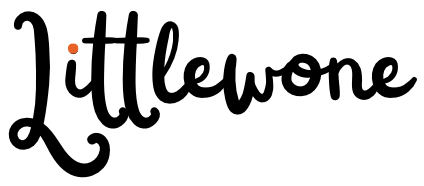As a new parent, you know how precious and elusive sleep can be for both you and your baby. While there are many different sleep aids and methods out there, one tool that has gained popularity in recent years is white noise. White noise machines are often marketed as a solution for fussy or colicky babies, promising to soothe them into a peaceful slumber. But what exactly is white noise, and how does it work? In this article, we’ll take a closer look at white noise for babies, exploring its benefits, potential drawbacks, and best practices for use.
What is White Noise?
Before we dive into the specifics of white noise for babies, let’s first define what white noise is. In simple terms, white noise is a type of sound that contains all the frequencies audible to the human ear, played at equal intensities. This creates a consistent, static-like sound that can help mask other noises in the environment.
Think of it like a steady hum, similar to the sound of a fan or air conditioner. White noise can be generated by various devices, including dedicated white noise machines, sound machines, and even smartphone apps.
Benefits of White Noise for Babies
So, what are the potential benefits of white noise for babies? Let’s take a look at some of the research:
- Better Sleep: One of the most common reasons parents turn to white noise for their babies is to help them sleep. Studies have shown that white noise can improve the quality and duration of infant sleep, leading to more restful nights for both babies and parents.
- Reduced Crying: Colic and fussiness are common issues for many babies, particularly in the first few months of life. White noise has been shown to help calm babies and reduce crying, potentially providing relief for both babies and parents.
- Improved Focus: For older babies and toddlers, white noise can be helpful in creating a consistent background sound that can aid in concentration and focus during playtime or learning activities.
- Comforting Familiarity: Babies are accustomed to hearing a consistent level of noise in the womb, and white noise can help recreate that familiar sound. This can provide a sense of comfort and security for babies, particularly in unfamiliar or stimulating environments.
- Travel and Transition: For families on the go, white noise can be a helpful tool for helping babies adjust to new environments or time zones. By creating a consistent sound environment, white noise can help ease the transition to a new place or routine.

Potential Risks of White Noise for Babies
While there are many potential benefits to using white noise for babies, it’s important to note that there are also some potential risks and drawbacks to consider. Here are a few to keep in mind:
- Volume and Intensity: One of the most important considerations when using white noise for babies is the volume and intensity of the sound. While white noise can be a helpful tool for masking other sounds, it’s important to ensure that the volume is not too loud or intense, which could potentially damage a baby’s delicate hearing.
- Dependency: Some parents worry that their baby may become too dependent on white noise in order to sleep or calm down. While there is no evidence to support this concern, it’s worth considering whether or not you want your baby to become reliant on a white noise machine for sleep.
- Overstimulation: While white noise can be helpful in creating a consistent sound environment, it’s important to ensure that the sound is not too stimulating or distracting for your baby. This can be particularly important for babies with sensory processing issues or other sensory sensitivities.
- Other Sleep Aids: White noise should not be used as a replacement for other important sleep aids, such as a safe sleep environment, consistent bedtime routine, and healthy sleep habits.
Best Practices for Using White Noise with Babies
If you do choose to use white noise with your baby, here are some best practices to keep in mind:
- Volume and Intensity: As mentioned earlier, it’s important to ensure that the volume and intensity of the white noise is safe and appropriate for your baby. A good rule of thumb is to keep the volume at or below 50 decibels, which is roughly equivalent to the sound of a quiet conversation.
- Placement: White noise machines should be placed at least 7 feet away from your baby’s sleeping area to minimize the risk of overexposure to the sound.
- Timing: White noise should be used primarily during sleep and nap times, rather than as a constant background sound throughout the day.
- Variety: It’s a good idea to vary the type and intensity of white noise that you use with your baby to prevent them from becoming too reliant on a single sound.
- Safety: Always follow the manufacturer’s instructions for use and safety precautions when using a white noise machine with your baby.
White Noise Apps for Babies
There are many white noise apps available for both iOS and Android devices, each with their own features and benefits. These apps offer a convenient, portable, and often inexpensive way to provide a consistent sound environment for your baby. Some apps offer a wide variety of sounds beyond just white noise, such as nature sounds, lullabies, and even simulated womb sounds. Others allow you to customize the sound by adjusting the volume, frequency, and other settings.
While white noise apps can be a convenient option for parents, it’s important to keep in mind some potential drawbacks. For example, the sound quality and consistency may not be as high as with a dedicated white noise machine, and the app may drain your device’s battery or interrupt other phone functions.
When choosing a white noise app for your baby, it’s important to read reviews, consider the features you need, and test the app before using it with your baby. Some popular white noise apps for babies include:
- Baby Sleep Sounds: This app offers a variety of white noise and other soothing sounds, as well as a timer and alarm function.
- White Noise Deep Sleep Sounds: This app features a wide variety of sounds, including white noise, lullabies, and nature sounds, and allows you to create custom sound mixes.
- Sleepy Sounds: This app offers a selection of calming sounds, including white noise, and allows you to set a timer and adjust the sound volume.
- Sound Sleeper: This app features a variety of white noise sounds, as well as a “smart” mode that adjusts the sound level based on your baby’s sleep patterns.
- myNoise: While not specifically designed for babies, this app offers a wide variety of customizable white noise sounds and other ambient sounds that may be helpful for creating a consistent sleep environment for your baby.

White Noise Apps and Music for Babies
In addition to dedicated white noise machines and smartphone apps, some parents also turn to streaming music services like Spotify for white noise and other soothing sounds. While this may seem like a convenient and affordable option, there are some important considerations to keep in mind.
First and foremost, it’s important to ensure that the white noise or other sounds you are playing for your baby are safe and appropriate for their age and development. Some Spotify playlists may not be specifically designed for babies, or may include sounds that are too loud or stimulating for their delicate ears.
When choosing a white noise playlist on Spotify or any other music streaming service, look for playlists that are specifically designed for babies or young children. These playlists typically feature soft, soothing sounds like white noise, gentle lullabies, and calming nature sounds. It’s also a good idea to test the playlist before using it with your baby, to ensure that the sound quality and consistency are appropriate.
Another consideration when using music streaming services for white noise is that the sound may be interrupted by advertisements or other audio content. This can be particularly disruptive during sleep times, so it’s important to use a premium subscription service that offers ad-free listening.
Conclusion
In conclusion, white noise can be an effective tool for helping babies fall asleep and stay asleep, especially during their first few months of life. Whether you choose a dedicated white noise machine, a smartphone app, or a streaming music service like Spotify, it’s important to prioritize your baby’s safety and comfort by selecting appropriate sounds, testing sound quality, and using the tool responsibly.
It’s also worth noting that white noise should not be used as a substitute for safe sleep practices, such as placing your baby on their back to sleep, providing a firm and flat sleep surface, and avoiding soft bedding, pillows, and other items in the sleep area.
By combining white noise with these other safe sleep practices, you can help create a peaceful and comfortable sleep environment for your baby, which can lead to better sleep for both your baby and yourself. Remember, every baby is different, so it may take some experimentation to find the white noise tool and settings that work best for your little one. With patience and persistence, you can help your baby get the restful sleep they need to grow and thrive.
Trouble to sleep? Take a look on Newborns: More Active at Night? Here’s Why and How Many Hours Does a Newborn Sleep?
